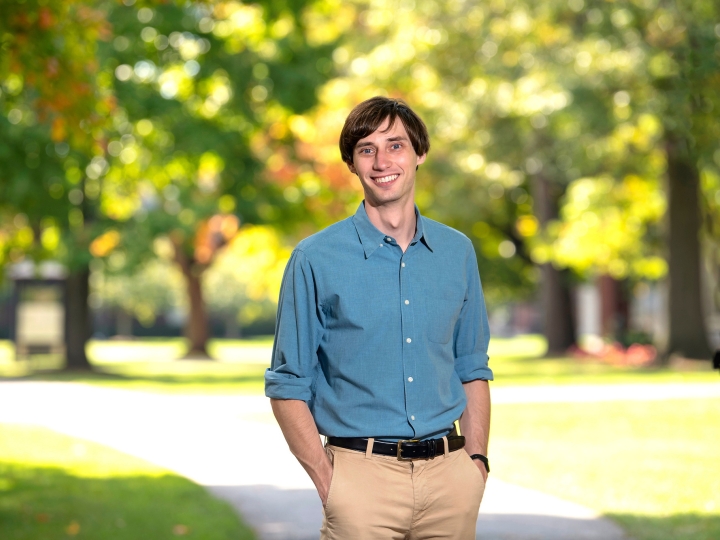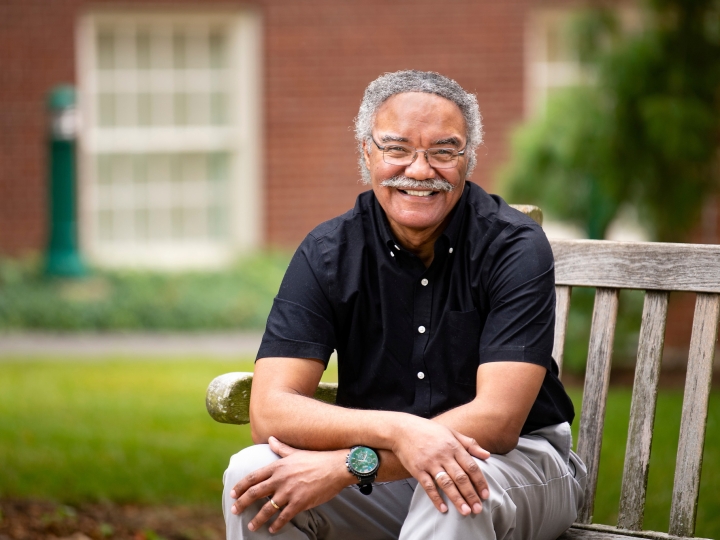
Joseph Meiser, Art & Art History
September 30, 2016
Creativity isn't just about problem-solving — it's also about problem-finding.
Regardless of the media, Professor Joe Meiser, art & art history, immerses his students in the creative process. Integral to that process is his collaboration with other departments and involving students from other disciplines to enhance a final piece of art.
In one such collaboration, Meiser and his students worked with a mechanical engineering professor and his students to create a robotic vulture. The two groups worked on the vulture in a serial fashion to figure out the sculptural and robotic aspects in tandem. "I created the initial shape of the vulture in a CAD program, then his student used my CAD file to design a frame for the vulture, then returned it to me," Meiser explains.
The project went back and forth between the departments, involving several students over several years, before everything was finally complete. The vulture was displayed in an exhibition at the South Bend Museum of Art in Indiana.
"Students benefit a great deal from working together on complex, multifaceted projects like these," says Meiser. "They have the opportunity to apply the theories they've learned about in their classes. They run into very difficult problems that can only be resolved iteratively, and hone their creative problem-solving skills as they work toward solutions. As they prepare a sculpture for exhibition in a museum, students take on a high level of responsibility and face real-world consequences, which reinforces the importance of getting it right."
These collaborations help Meiser too, by enabling him to create kinetic sculptures that he says are far more advanced than he could ever achieve on his own.
In each of his classes, Meiser identifies a variety of learning goals for his students, but there is one he lists on all of his syllabi. "By the end of the semester, I aspire to help each of my students cultivate a more inquisitive and inventive attitude."
By creating studio art, says Meiser, students learn that creativity "isn't just about problem-solving — it's also about problem-finding."
Meiser says that while it's easy to teach students facts, techniques and basic concepts, it's far more difficult to impact a student's attitude. "One's attitude is tied in with the individual's core outlook and worldview. It is deep below the surface and hard to reach, but I think it can be impacted through the creative process — and I think this change in attitude can have a dramatic long-lasting influence on how one meets the world."

